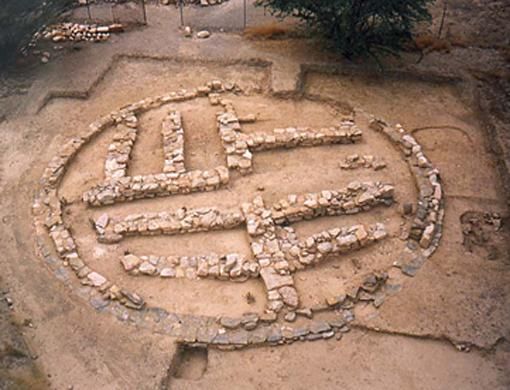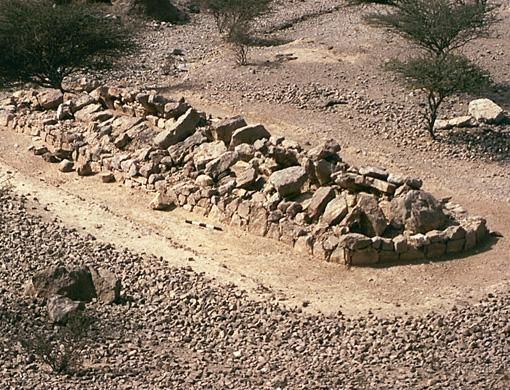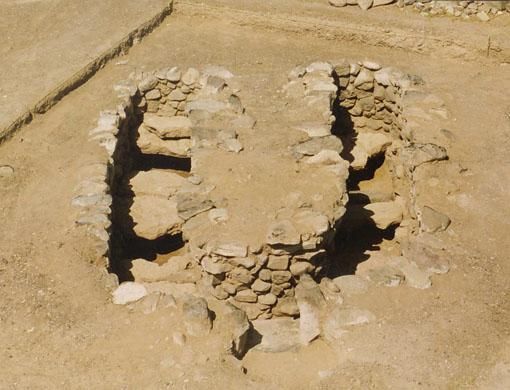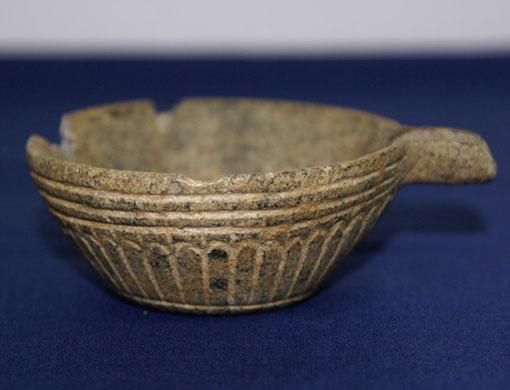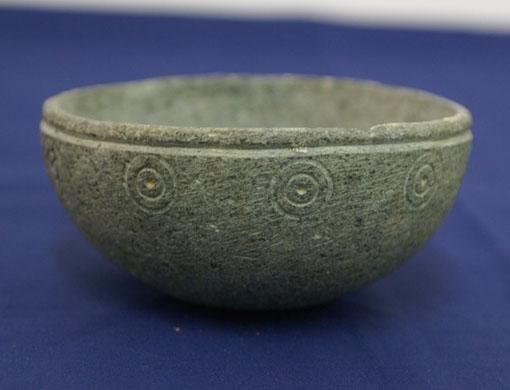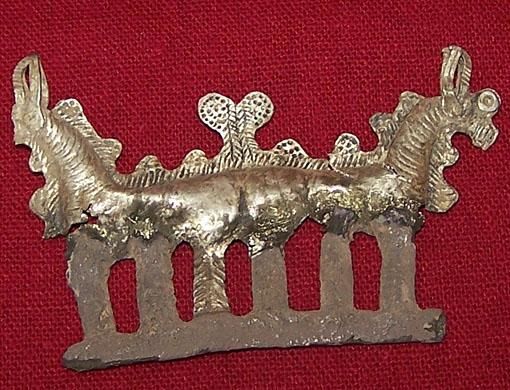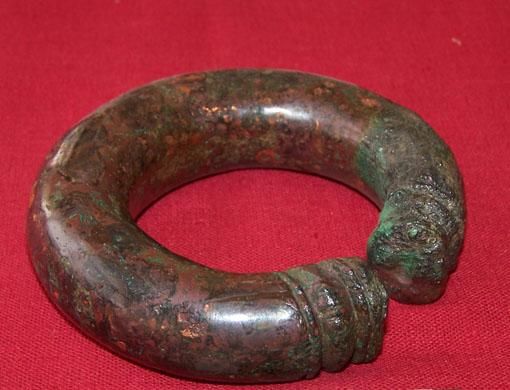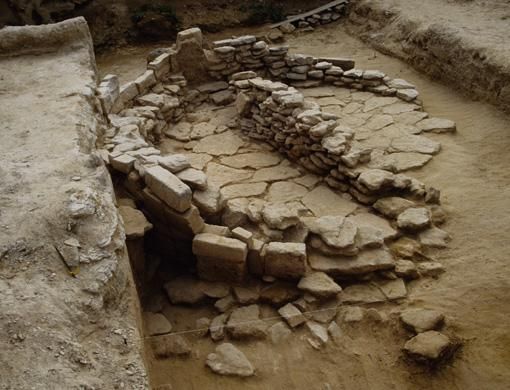Until 50 years ago, the history of the UAE was assumed to date back no earlier than the Islamic era.
But archaeological excavations in the area have revealed a rich history dating back to thousands of years.
A Danish team started excavations in the UAE in 1959 and the discoveries made on the Umm Al Nar Island in Abu Dhabi marked the beginning of important discoveries all over the country and opened the door to more excavations.
The country is now celebrating 50 years of discoveries with a new find that points to a rich ancient history.
One of the discoveries indicates that the UAE and the Arabian region enjoyed a better climate in the past.
Palaeontological evidence from the western region of Abu Dhabi, where fossilised remains of turtles, crocodiles, elephants, giraffes, hippos, rhinos and other mammals from the Upper Miocene Age (6 to 8 million years ago) have been found, and the discovery of traces of ancient rivers indicate that the landscape of Abu Dhabi was quite different before the arrival of the human race.
Michel Mouton of the National Centre for Scientific Research (CNRS) in France, an expert on the archaeology of the Arabian peninsula, came to the UAE as a student in 1982.
He started working in Al Ain at an Iron Age site called Rumaila. After three years, he went to Sharjah, where he conducted surveys for the Department of Antiquities, mainly in Maliha.
A team worked at the site for nearly 15 years.
In 1988 Mouton started excavating in Al Dour in Umm Al Quwain with an international team.
He unearthed two statues of eagles by the entrance of the main building at the site.
“They were in a building which was probably the residence of the ruler but those eagles were from earlier times. The building can be dated back to the 3rd century AD,'' Mouton told Weekend Review.
Al Dour was an important site of the region in the 3rd century BC. At that time Maliha was the seat of power and a city that remained occupied until the 3rd century AD.
Al Dour was occupied from the beginning of the Christian Era until the end of the Maliha culture. Another important site has been discovered in Dibba on the Omani coast.
“Lately, we have found articles from the beginning of the Christian era but the place was probably occupied even before that,'' said Mouton, who is working at the site.
“Dibba was a harbour on the sea route to India and East Asia. Al Dour was a centre where tribes of the Arabian peninsula used to meet.''
Dibba had markets, a temple, a few houses and a cemetery. “It was not a city like Maliha. The two perhaps belonged to the same culture and maybe both the places were under the same ruler. But coins minted in Maliha have designs and symbols similar to the ones found in Al Dour,'' Mouton said.
Dibba has turned out to be the Omana port mentioned in the ancient classical books about the region.
Information about the religious beliefs of the people of those times is scarce.
“A temple found at Al Dour had Aramaic inscriptions mentioning the Sun deity Shams. Some other inscriptions we found in Maliha mention deities such as Manat and Laat.
"As archaeological evidence found at Karyat Al Faw in central Arabia indicates that these two deities, besides others from north Arabia, were worshipped, it is possible the people there had links with tribes of north Arabia,'' Mouton said.
Mouton said not much was known about the ancient history of the region when excavation work began in the UAE because till then no antiquities had been found.
“We knew about the traditions and history dating back not earlier than the Islamic era. The first discoveries by the team of Danish archaeologists in the 1950s were Bronze Age artefacts from Umm Al Nar and Hili graves.
"They indicated there were settlements in the region before the Islamic era. Trade relations with India and Mesopotamia were known from very ancient times.''
Richard Cuttler, from Birmingham University believes archaeology in the UAE is going through an interesting phase as some major discoveries have been made, particularly those dating back 8,000 years.
Cuttler said it is important to know the roots of our culture. “Culture is important for every country. It gives you a better perspective on a country when you know and understand its culture.''
Till 20 years ago, the links of the settlements with China were not clear. But that changed after a series of excavations by Hanae and Tatsuo Sasaki from the University of Kanazawa in Japan.
The excavations were undertaken at many locations in Ras Al Khaimah, Dubai, Sharjah, Fujairah and Al Ain.
“Over the years we have studied porcelain from China. A lot of this was exported,'' Hanae said.
Till about two decades ago, it was not known where and how much was exported. But lately, we have been able to get insights.
We have also come to know that besides Chinese pottery, a large quantity of Myanmarese and Thai pottery was imported by the Arabian region,'' she said.
Eisa Abbas Hussain, the supervisor of the Archaeological Survey in Sharjah's Department of Culture and Media, classifies archaeological discoveries in the UAE over the past 50 years into buildings (such as houses, military buildings and cemeteries) and other types of findings.
In the past few years, many discoveries have been made in the UAE, comprising buildings and sites rich in ancient history, such as those in Masafi, Bithna and Saroq Al Haded, which date back to the first century BC.
The Jebel Baraka site is believed to date back to the Middle Stone Age. Artefacts such as ivory hairbrushes and glass bottles found in Dibba are important, as they provide clues to links between cultures.
While findings in Saroq Al Haded highlighted the use of metals in ancient times, articles with 99 per cent copper from the 3rd century BC were found in Wadi Al Hilo.
Sites such as Jebel Al Buhais from the Old Stone Age, where the German team worked, offer glimpses of the way of life.
People in those times not only hunted but also raised livestock. They led a harsh and violent life, as is suggested by broken bones discovered at the site.
At Maliha, inscriptions known as South Mesnd were found, for which Aramaic descriptions were found later on.
Some deities with names such as Shams, Wed, Kahal, Manat, which were known in the peninsula, were named in those inscriptions.
Names such as Emruo Al Shams, Lat and Obaid Ibn Awss have also been found inscribed in stone.
Memories of an excavator
Monir Taha, an archaeology expert at the Qatar Museum Authority, came to the UAE for the first time in 1972 for excavations in Maliha.
Later, he worked on a site in Ras Al Khaimah which turned out to be the ancient Julphar. He went on to conduct excavations in Al Qusais and Jumeirah in Dubai.
After publishing the results of his excavations he decided to study for a PhD from Cambridge University on the discoveries made at Al Ghusais.
“I chose the title ‘The Iron Age in the UAE with Special Reference to Mesopotamia' but when I published the work, I discovered it was the first discovery from the Iron Age in the whole region. So I changed the title to ‘The Discovery of Iron Age in UAE', he said.
His book is a reference for archaeologists who want to date the Iron Age not only in the UAE but in the whole Arabian peninsula.
Taha believes his most important discovery was Mount of Serpents (Tal Al Tha'abeen) in Al Qusais.
“It was in the middle of a settlement and everything that I have found in that small place (24 metres by 20 metres) is associated with serpents; the pottery, the bronze, the ball, the jar — all have a symbol of a serpent'' he said.
The building was a temple dedicated to the worship of serpents 3,000 to 2,500 years ago.
“After my discovery, many other serpent mounts were discovered in areas such as Fujairah, Sharjah, Ras Al Khaimah, Oman and Qatar. This helped me to confirm my theory,'' Taha said.
“There existed a flourishing civilisation with commercial and cultural links with Mesopotamia, India, Africa and Arabia.
"It was the place where they used to bring goods from various places for trade and redistribution to various destinations in the region.''
Taha said it was a unique culture extending from the extreme north of the Arabian Gulf to the Gulf of Oman.
“The facets of culture you find in Failaka in Kuwait and the northern part of Arabia or Qatar, Bahrain and the UAE are the same.''
Sharjah discoveries: A timeline
-
The Stone Age 5000-3000BC
Sharjah's Late Stone Age inhabitants were herders who moved between the coastal regions and inland plains to take advantage of seasonal variations in climate.
The lagoons, mudflats and mangrove swamps on the coast offered easily obtained food, including shellfish, fish, turtle and dugong, while the interior provided hunting grounds and open grassland for their herds of sheep, goats and cattle.
Archaeological remains of this period include many finely crafted weapons and jewellery, such as those found at Jebel Al Buhais.
These nomadic herders returned to Jebel Al Buhais each year in late winter and spring to rest their herds and bury their dead.
They had tools so fine that holes could be drilled through pearls and seashells to make beautiful necklaces and other ornaments.
The jewellery found buried with the dead indicates a well-developed tradition of craftsmanship of a high technological level. Baskets and wooden objects may have also been made but these have not survived. -
The Bronze Age 3000-1300BC
The Bronze Age in Sharjah was a time of great change and development despite a more arid climate. Craft and metal industries flourished, local pottery was manufactured for the first time and trade networks expanded.
The demand for copper and other raw materials from the Arabian Peninsula brought new wealth to the region. A number of gold objects have been found in the tombs of this period.
Like their nomadic ancestors, the people continued to herd sheep, goats and cattle, hunt wild animals, gather shellfish and fish in the seas.
But they also began to settle in villages and grow crops such as wheat and barley, developing methods of irrigation and building mud brick houses with palm frond roofs.
By this time, the date palm had become an important source of food. The tree was also being used for materials to make buildings, ropes and baskets.
Settlements at Tell Abraq and Kalba on the coast were flourishing Bronze Age centres, while tombs at Jebel Al Emeilah and Jebel Al Buhais show the inland areas were also populated. Discoveries at these sites give us a vivid glimpse of life during the 3rd and 2nd millennia BC. -
The Iron Age 1300-300BC
The period after the Bronze Age is referred to as the Iron Age despite the fact that iron was rarely used in southern Arabia for another 800 or 900 years because copper and bronze were abundant. This was a time of great change and prosperity because of two key developments.
The first of these, a system of underground irrigation channels known as ‘falaj', allowed previously uninhabitable land to be cultivated and settled.
The second was the domestication of the camel, which enabled a complex overland trade network to expand across the peninsula and beyond, in addition to continued maritime trade in the Gulf. Small, well established settlements, such as Muweilah, developed throughout the region during this period.
The people continued to cultivate wheat and barley, and dates, milk, meat and cheese were also staple foods. Fish and seafood were brought inland from coastal areas, indicating ongoing contact between the inland and coastal communities. -
Greater Arabia 300BC-AD611
From around 300BC, the Arabian Peninsula became part of a trading network that linked the countries of the Indian Ocean with those of the Mediterranean, opening trade links with many great civilisations of the time.
The fame of pearls from the Arabian Gulf spread as far as Rome and frankincense trade enriched the peoples of Arabia. This was a time of great prosperity for southeast Arabia and settlements flourished.
Manufacturing techniques continued to develop. Fine gold, silver and bronze artefacts were crafted locally. Cloth and baskets were made and pigments were used on jewellery and fabrics.
Camel caravans meant that even inland settlements such as Maliha and Jebel Al Buhais had access to luxury and exotic goods brought in from Dibba and other coastal communities.
Challenges on hand
Eisa Abbas Hussain, supervisor of Archaeological Survey in Sharjah's Department of Culture and Media, believes it has now become essential to preserve the archaeological discoveries made over the years and develop the collection.
“That will require staff across the country to carry the flame. Research and books on the history of the UAE will flow. Our history is rich in all ages,'' he said.
Finding national staff interested in archaeological excavation is a challenge, too. “They are rare and most of them prefer to work in offices,'' he said.


